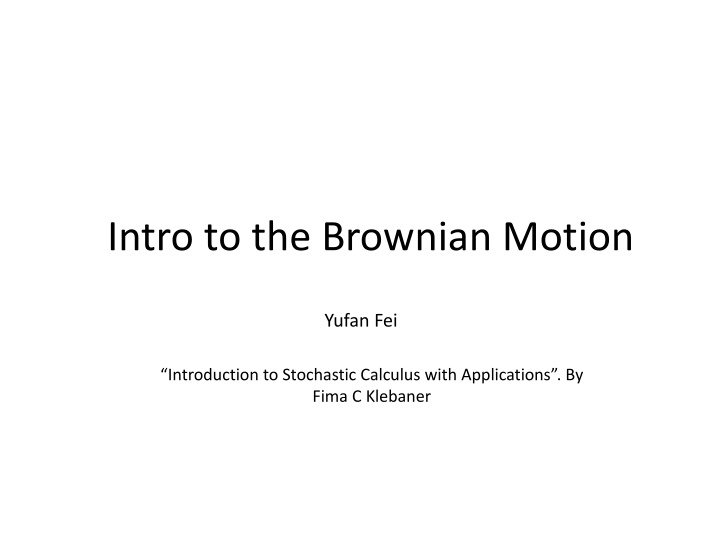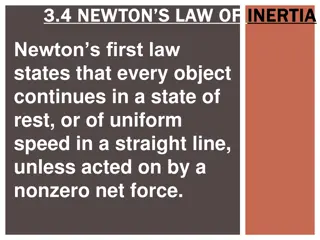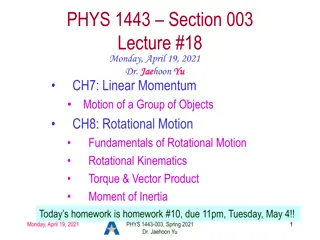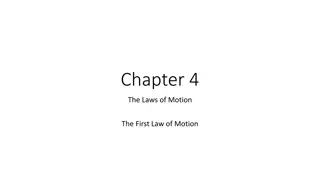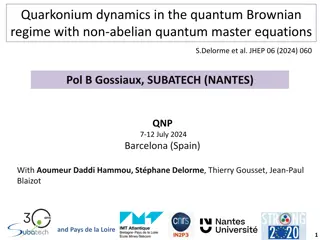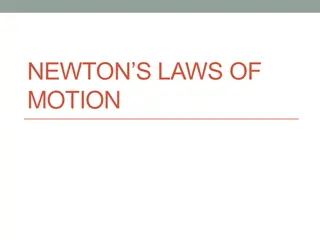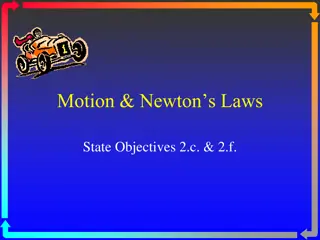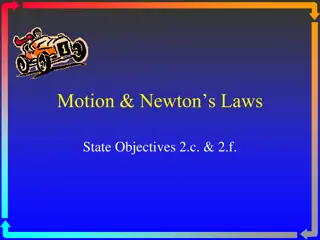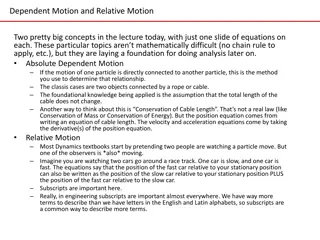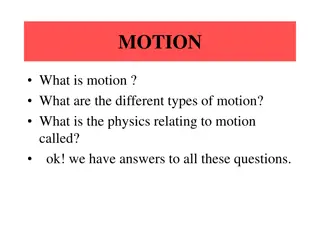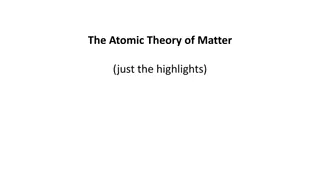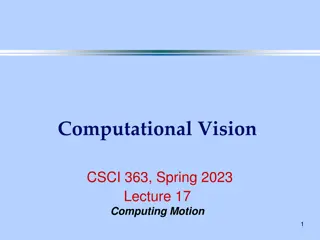Introduction to Brownian Motion
Brownian Motion, discovered by Robert Brown in 1827, is a stochastic process with unique properties like independence of increments, normal distribution, and continuity of paths. This phenomenon stems from the random movement of pollen particles in water due to molecular bombardment. The graphical interpretation reveals a function with equal chances of increasing and decreasing in incremental time intervals.
Download Presentation

Please find below an Image/Link to download the presentation.
The content on the website is provided AS IS for your information and personal use only. It may not be sold, licensed, or shared on other websites without obtaining consent from the author.If you encounter any issues during the download, it is possible that the publisher has removed the file from their server.
You are allowed to download the files provided on this website for personal or commercial use, subject to the condition that they are used lawfully. All files are the property of their respective owners.
The content on the website is provided AS IS for your information and personal use only. It may not be sold, licensed, or shared on other websites without obtaining consent from the author.
E N D
Presentation Transcript
Intro to the Brownian Motion Yufan Fei Introduction to Stochastic Calculus with Applications . By Fima C Klebaner
What is a so-called Brownian Motion? Robert Brown This phenomenon was found by a Scottish botanist Robert Brown while examining grains of pollen of the plant in water under a microscope in 1827. (21 December 1773 10 June 1858) http://www.npg.org.uk/collections/search/portraitLarge/mw00850/Robert-Brown?
Mathematical properties Brownian Motion is a stochastic process: Independence of increments B(t) - B(s), for t > s, is independent of the past. Normal increments B(t) - B(s) has normal distribution with mean 0 and variance t-s. B(t)- B(s) ~ N (0, t-s) distribution Continuity of paths B(t), t >= 0 are continuous functions of t.
Independence of Increments Recall experiments done by Robert Brown Particles of pollen grains moved through the water resulting from individual molecules The direction of the force of atomic bombardment is constantly changing Direction of the combined force is unpredictable Force always exists
Normal Increments Movement due to instantaneous imbalance in the combined forces Since a water molecule is 10^5 times smaller than a pollen particle, the pollen appears to travel with irregular movements. By the central limit theorem, the arithmetic mean of a sufficiently large number of iterates of independent random variables will be approximately normal distributed.
Continuity of Paths This property makes an intuitive sense The only way to have a discontinuous path is that a particle suddenly blinks to another location But a particle is not able to jump out of the universe
Graphical meaning Graphically speaking, a Brownian Motion is a function that has equivalent probability of increasing and decreasing in an incremental time interval. Every increment over an interval of length (t-s) is normally distributed with mean 0 and variance (t-s).
Unique feature of path Almost every sample path B(t) Is not monotone at any interval Pick any interval [a, b], there exists infinite many small intervals such that P(B(t) is monotone on [a, b]) = 0 Is not differentiable at any time Consider , then the limit does not converge because B(t) is neither decreasing nor increasing. Thus there exists a sequence {tn}converging to t such that B(tn)-B(t) is positive for some n and negative for other n.
Markov property A Brownian Motion does not remember how it goes to the present state. Markov property Probability distribution based on information from the past (Given path) = Probability distribution given its current state (B(t) | B(1) = 1) has the same distribution as 1 + W(t), Where W(t) is a different Brownian Motion
Application in real-life If we define the exit time for a Brownian Motion as the minimum time it would take to exit an interval The exit time for a Brownian Motion is always less than infinity. By using Markov property and reflection principle, we can establish the distribution of the maximum (minimum) of B(t) on [0, t]
Work Cited Zhang, Lixin. "Functions of Brownian Motion." (n.d.): n. pag. Http://www.math.zju.edu.cn/zlx/forphd/ch1-5and6.pdf. Web. Fima C Klebaner. Introduction to Stochastic Calculus with Applications . Third Edition. Imperial College Press
